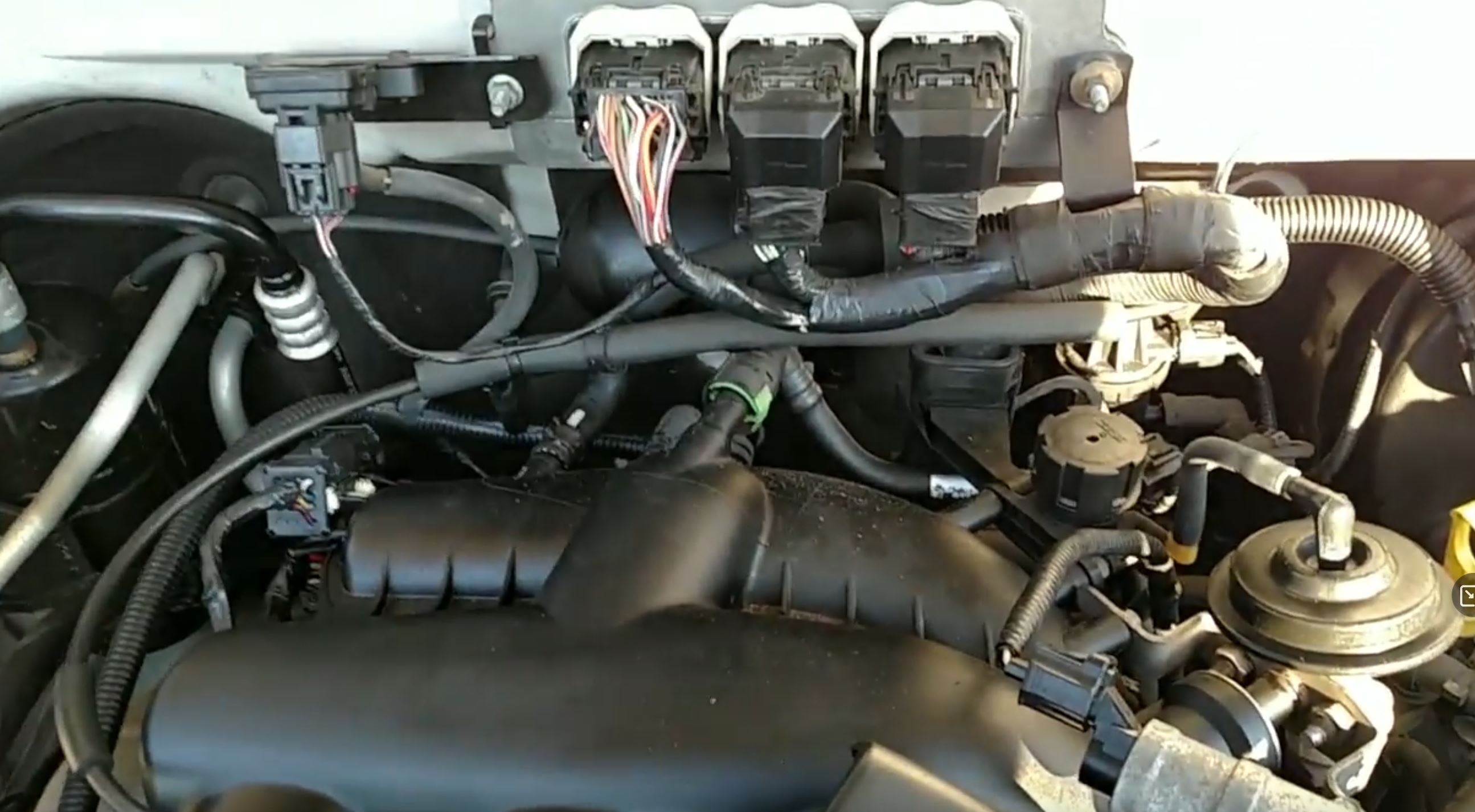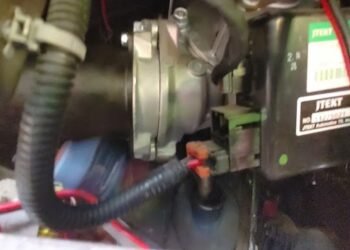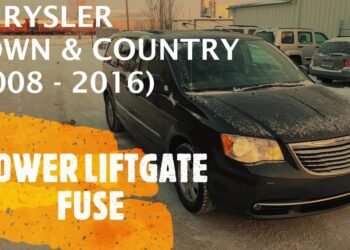Troubleshooting a 2005 Ford Escape often involves addressing transmission issues and ignition problems. These common concerns impact performance and reliability.
The 2005 Ford Escape, a compact SUV, has carved its niche in the automotive market with its blend of performance, comfort, and versatility. Yet, like any vehicle, it’s not immune to problems. Owners frequently encounter issues related to the automatic transmission, such as erratic shifting or the vehicle unexpectedly slipping into different gears.
Ignition troubles, including difficulty starting the engine or a complete failure to start, are also prevalent. This introduction aims to guide owners through identifying and addressing some of the most common issues with the 2005 Ford Escape, enhancing their driving experience and extending the vehicle’s lifespan.

Credit: www.copilotsearch.com
Introduction To 2005 Ford Escape Issues
The 2005 Ford Escape is known for its ruggedness and reliability. Yet, like any vehicle, it comes with its own set of issues. Owners must be aware of these problems to maintain the car’s performance. Understanding the common issues can help in quick troubleshooting, ensuring the Escape runs smoothly for years to come.
Common Problems
- Transmission Failure: Early wear and sudden breakdown.
- Ignition Coil Issues: Leads to engine misfires.
- Stalling Engine: May occur due to faulty sensors.
- Exhaust Leak: Can be identified by a loud noise from the engine area.
- Cooling System Problems: Overheating can damage the engine.
Importance Of Timely Troubleshooting
Ignoring signs of trouble may lead to costly repairs. Timely troubleshooting protects your car’s value and ensures safety on the road. Regular checks help spot issues early, saving time and money. A well-maintained Escape provides a reliable ride for daily use or adventurous trips.
Starting Troubles
Are you facing starting issues with your 2005 Ford Escape? You’re not alone. Many Escape owners report similar troubles. A few checks can pinpoint the cause. Read on to solve your starting woes.
Battery Health Check
A good battery is key for starting your car. Let’s ensure yours is up to task. Use a multimeter for these steps:
- Turn off your Escape.
- Set the multimeter to voltage.
- Connect red to positive, black to negative.
- Read the voltage. It should be 12.6 volts.
Low voltage? Your battery might need a charge or replacement.
Starter Motor Insights
The starter motor turns the engine over. A faulty one means your car won’t start. Listen for a click when you turn the key. No sound could mean a bad starter. Here’s what to check:
| Sign | Possible Issue | Action |
|---|---|---|
| Clicking sound | Dead battery or bad starter | Charge or replace battery, test starter |
| No sound | Loose wires or bad starter | Check connections, replace starter if needed |
| Grinding noise | Worn gears or starter | Inspect gears, replace starter |
Regular maintenance keeps your Escape running smoothly. Don’t ignore starting issues. They can lead to bigger problems.
Engine Performance Hiccups
Owners of the 2005 Ford Escape often report issues with engine performance. These hiccups can stem from various sources, affecting your ride’s smoothness and reliability. Regular maintenance can help prevent or resolve these problems. Let’s dive into key areas that you should check to keep your Escape running smoothly.
Air Filter Maintenance
Air filters play a vital role in engine health. A clogged filter reduces airflow, straining the engine. This can lead to poor acceleration and efficiency. Checking and replacing your air filter is a simple yet effective step in troubleshooting engine hiccups.
- Locate the air filter housing under the hood.
- Remove the old filter and inspect it for debris.
- Replace if dirty, ensuring a snug fit.
Fuel System Checks
Your Escape’s fuel system is crucial for engine performance. A dirty fuel filter or failing fuel pump can cause hiccups. These components ensure that your engine gets the clean fuel it needs.
- Check the fuel filter for blockages.
- Listen for unusual noises from the fuel pump.
- Inspect fuel lines for leaks or damage.
Maintain these systems to avoid performance issues. Routine checks can save you from costly repairs in the future.

Credit: www.youtube.com
Transmission Glitches
Owners of the 2005 Ford Escape may face transmission glitches. These issues can disrupt your driving experience. Let’s troubleshoot common transmission problems.
Fluid Level And Quality
Correct fluid levels are vital for smooth transmission operation. Low or dirty fluid can cause shifting issues. Always check the fluid using the dipstick.
- Engine should be warm when you check the level.
- Vehicle must be on level ground to get an accurate reading.
- Look for bright red color and a sweet smell in the fluid.
- Dark fluid or a burnt smell suggests the fluid needs a change.
Shift Solenoid Tests
Shift solenoids control fluid flow in the transmission. Faulty solenoids can lead to gear shifting problems. Testing these solenoids can pinpoint the issue.
- Access the solenoids through the transmission pan.
- Use a multimeter to check each solenoid’s resistance.
- Compare readings to the manufacturer’s specs.
A failed test indicates a bad solenoid that may need replacement.
Electrical Anomalies
The 2005 Ford Escape is known for its durability. Yet, electrical issues can arise. These glitches can affect your Escape’s performance. Let’s troubleshoot common electrical anomalies.
Fuses And Relays
Electrical problems often start with fuses and relays. Check the fuse box first. It’s under the dashboard or the hood. Look for blown fuses. These will have broken wires or charred glass.
Next, test the relays. Relays control current flow to vital car parts. Swap relays with similar ones. See if the issue moves or stays.
| Component | Fuse/Relay Condition | Action |
|---|---|---|
| Lights | Blown Fuse | Replace Fuse |
| Starter | Bad Relay | Swap/Replace Relay |
Alternator Output Verification
The alternator powers the battery. It keeps the Escape running. A faulty alternator leads to power loss.
Use a multimeter to test the alternator output. Set it to volts. Connect it to the battery. A healthy alternator shows 13.8 to 14.2 volts.
- Turn off the Escape.
- Open the hood.
- Locate the battery terminals.
- Connect the multimeter.
- Read the voltage.
Low voltage means a weak alternator. Replace it soon. Keep your Escape running smoothly.
Suspension Noises And Vibrations
Drivers often report hearing odd sounds from their 2005 Ford Escape’s suspension. These sounds can indicate wear or damage. Understanding common suspension noises helps diagnose problems early. This section delves into the usual suspects behind such noises and vibrations.
Bushings And Bearings
Bushings and bearings are vital suspension components. They reduce friction between moving parts. Over time, they can wear out. This wear leads to noises and reduced vehicle stability.
- Creaking or groaning noises when turning
- Uneven tire wear
- Loose steering feel
Inspect bushings and bearings regularly. Replace them if they show signs of damage.
Shock Absorbers And Struts
Shock absorbers and struts control movement and maintain ride comfort. They absorb road bumps. Failed shocks or struts often lead to:
- Bouncing after a bump
- Noisy rattling during drives
- Uneven tire treads
Check these parts during regular maintenance. Replace them if they leak or show damage. This ensures a smooth, quiet drive.
Cooling System Concerns
The 2005 Ford Escape is a robust SUV. Yet, cooling system issues can arise. It’s essential to address these promptly. A healthy cooling system keeps the engine at the right temperature. Let’s dive into common concerns and fixes.
Thermostat Functionality
The thermostat regulates engine heat. A faulty one can cause overheating or cold running. Signs include sudden temperature changes and heater malfunction. Regular checks ensure the thermostat performs well.
Check the thermostat if you notice:
- Engine temperature fluctuations
- Heater not warming up
- Coolant level drops without leaks
Coolant Leaks And Radiator Health
Coolant leaks lead to engine overheating. Spotting leaks early is key. Look for puddles under the car. Check the radiator for rust or damage. A healthy radiator is crucial for a reliable cooling system.
| Coolant System Check | Action |
|---|---|
| Inspect for leaks | Repair or replace parts |
| Check coolant levels | Top up if low |
| Examine radiator condition | Clean or replace if needed |
Diy Maintenance Tips
Keeping your 2005 Ford Escape in top shape is rewarding. You save money and extend your vehicle’s life. Simple DIY maintenance can prevent common issues. Let’s explore essential tools and preventive measures for your Ford Escape.
Tool Kit Essentials
Right tools make DIY car repairs easier. Here’s what you need for your Ford Escape:
- Socket set: For various nuts and bolts.
- Screwdrivers: Flathead and Phillips for different screws.
- Pliers: Regular and needle-nose for gripping.
- Wrench set: Adjustable wrenches are versatile.
- Code reader: Diagnoses engine lights and errors.
- Flashlight: Illuminates dark engine spaces.
- Jack and stands: For safe undercarriage access.
With these, you can tackle basic repairs and maintenance.
Preventive Measures
Preventive care keeps your Escape running smoothly. Follow these steps:
- Check fluids: Oil, coolant, and brake fluid levels.
- Inspect tires: For wear and proper inflation.
- Test battery: Ensure it holds a charge.
- Replace filters: Air, fuel, and cabin filters matter.
- Check belts: For cracks or wear.
- Examine brakes: For pad thickness and rotor condition.
- Look for leaks: Under the vehicle and in the engine bay.
Regular checks prevent breakdowns and costly repairs.
Seeking Professional Help
At times, your 2005 Ford Escape might face issues beyond DIY fixes. Seeking professional help ensures your vehicle gets the right care. This section guides you on when to reach out to a mechanic and how to select the best service center.
When To Call A Mechanic
Not all car troubles require expert intervention. But, certain signs should not be ignored. If you notice any of these, contact a mechanic:
- Warning lights on the dashboard light up.
- Strange noises come from the engine or other parts.
- The car starts with difficulty or doesn’t start at all.
- There’s a noticeable drop in fuel efficiency.
- Unusual smells or smoke are evident.
Choosing The Right Service Center
Selecting a reliable service center is crucial. Here are steps to find a good one:
- Ask for recommendations from friends or family.
- Check online reviews for honest feedback.
- Ensure the center has experience with Ford Escapes.
- Visit the center. Look for cleanliness and organization.
- Discuss your car’s issue. Notice if they listen and provide clear explanations.
Remember, the right mechanic and service center will extend the life of your 2005 Ford Escape. Choose wisely.

Credit: m.youtube.com
Frequently Asked Questions
What Are The Main Problems With The 2005 Ford Escape?
The 2005 Ford Escape often faces issues with transmission failure, engine stalling, and faulty ignition coils. Common problems also include leaking wheel bearings and problematic power steering.
What Can Cause A Ford Escape Not To Start?
Several factors can prevent a Ford Escape from starting. These include a dead battery, faulty starter motor, bad ignition switch, empty fuel tank, or clogged fuel filter. Regular maintenance helps avoid these issues, ensuring your vehicle starts smoothly.
What Are The Bad Years Of The Ford Escape?
The Ford Escape faced notable issues in the 2001, 2005, 2008, 2013, and 2014 models. These years often reported problems with transmission, engine, and cooling system, making them less reliable choices for consumers seeking a dependable vehicle. Buyers should approach these specific models with caution.
Why Won T My Ford Escape Window Go Up?
Your Ford Escape window may not go up due to a blown fuse, faulty window motor, bad switch, or obstructed window track.
What Are Common 2005 Ford Escape Issues?
Electrical problems, transmission failure, and engine stalling are frequent concerns reported by 2005 Ford Escape owners.
Conclusion
Navigating through the common issues of a 2005 Ford Escape doesn’t have to be daunting. By tackling each problem with the tips outlined, owners can ensure their vehicle remains reliable. Remember, regular maintenance is key to avoiding these hiccups. Drive confidently, knowing you’re prepared for any bumps in the road ahead.
















